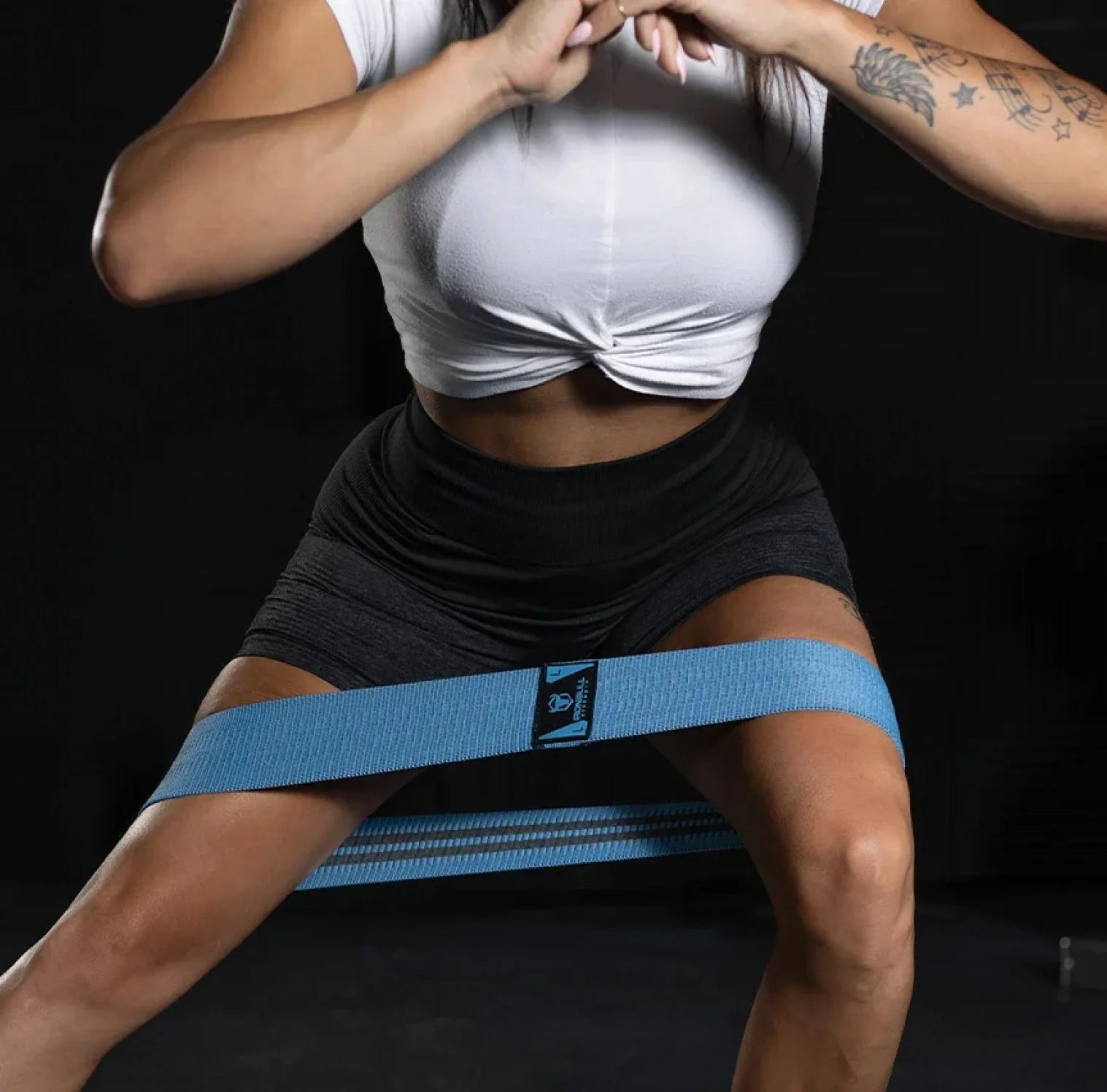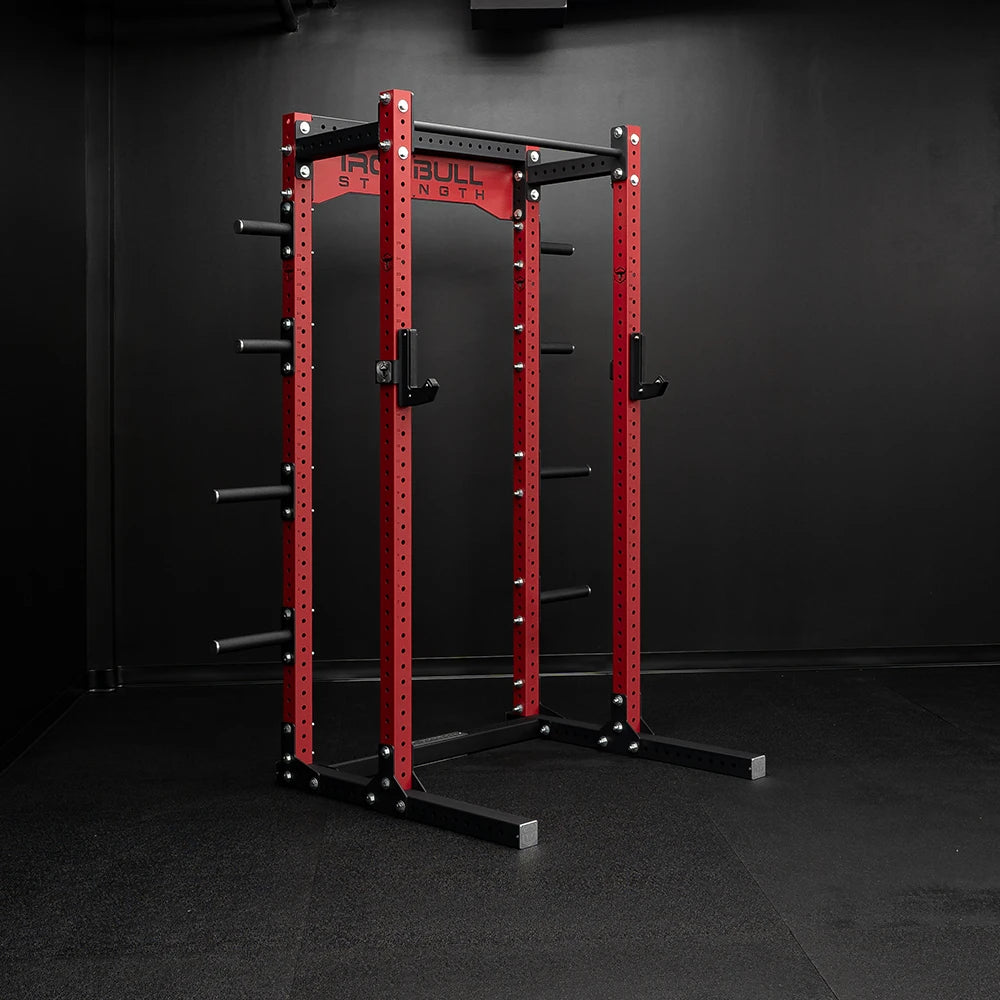Best Glute Isolation and Compound Exercises to Strengthen and Grow Your Glutes

Want to grow stronger, more defined glutes? It’s important to know the right combination of glute isolation and compound exercises. Whether you’re aiming for aesthetics or improving athletic performance, choosing the right exercises is key. In this guide, we'll break down everything you need to know about glute training, including the differences between isolation and compound exercises, how to activate all three glute muscles, and effective workout tips.
Before we dive into specific exercises, it's crucial to understand the difference between isolation and compound exercises. Each plays a distinct role in building strong, well-rounded glutes.
What Are Glute Compound Exercises?
Compound exercises engage multiple muscle groups and joints at the same time, making them highly effective for building overall strength and power. In the context of glute training, compound exercises work not just your glutes, but also your quads, hamstrings, and even your lower back.
Related: 5 Best Exercises for Strengthening Glutes
- Squats: A fundamental lower-body compound movement that engages the glutes, quads, and hamstrings. Deep squats ensure the glutes are fully activated.
- Romanian Deadlifts: This exercise targets the posterior chain, focusing on the glutes and hamstrings by hinging at the hips.
- Hip Thrusts: A popular compound glute exercise that allows for heavy loads and maximal glute activation.
What Are Glute Isolation Exercises?
In contrast, isolation exercises focus on a single muscle group. Glute isolation exercises specifically target the glute muscles, minimizing involvement from other areas like the hamstrings or quads. This allows for targeted strengthening and sculpting of the glutes.
- Glute Kickbacks: A fantastic isolation movement that focuses on the gluteus maximus. You can perform this exercise with a cable machine or resistance band or our hip resistance bands.
- Hip Abductions: This exercise primarily targets the gluteus medius, working to improve the shape and strength of the upper buttocks.
- Clam Shells: A simple yet effective movement for isolating the gluteus medius, which is often underdeveloped compared to the larger glute muscles.
Why You Need Both Isolation and Compound Exercises for Glute Growth
For optimal glute development, it’s important to include both compound and isolation exercises in your workout routine. Compound movements build overall lower-body strength, allowing you to lift heavier weights and stimulate muscle growth. Isolation exercises, on the other hand, fine-tune your glute training by targeting specific areas for better muscle activation and aesthetic shaping.
Benefits of Compound Glute Exercises
Compound movements like squats, deadlifts, and hip thrusts are the foundation of any strong lower-body workout. These exercises allow you to lift heavier weights and engage multiple muscle groups, which leads to more significant muscle growth and strength gains.
Benefits of Glute Isolation Exercises
Isolation exercises are especially useful for targeting weaker or underdeveloped parts of the glutes, like the gluteus medius and minimus. These exercises help in enhancing muscle definition and correcting imbalances, which is essential for both aesthetics and injury prevention.
Related: Best Leg Workouts at Home for Any Setup
Top Compound Glute Exercises for Strength and Growth
Barbell Hip Thrust
One of the best compound exercises for activating and strengthening the glutes. Barbell hip thrusts allow you to load the glutes heavily and build explosive power.
- How to Perform: Sit on the floor with your back resting against a bench, and place a loaded barbell with a barbell pad over your hips. Thrust your hips upward, squeezing your glutes at the top, then lower back down.
- Target Muscle: Gluteus maximus
Romanian Deadlifts
The Romanian deadlift is an excellent posterior chain exercise that targets the glutes and hamstrings. The movement is highly effective for improving strength, posture, and muscle balance.
- How to Perform: Stand with a barbell in front of you. Keep your back straight, and hinge at your hips to lower the bar toward the ground. Drive through your heels to lift the bar back up while squeezing your glutes.
- Target Muscle: Glutes, hamstrings
Bulgarian Split Squats
This single-leg exercise helps improve glute strength, balance, and stability. It’s especially effective at targeting the gluteus medius and minimus, muscles that are often overlooked in glute training.
- How to Perform: Place your rear foot on a weight bench and step your front foot forward. Lower your body into a squat position, then press through your front foot to return to the start.
- Target Muscle: Glutes, quads, hamstrings
Sumo Deadlifts
The sumo deadlift is a variation of the traditional deadlift that shifts more of the workload onto the glutes and inner thighs. The wide stance helps target the glutes while still engaging the quads and hamstrings.
- How to Perform: Stand with your feet wider than shoulder-width apart. Grab the barbell with both hands inside your knees, then pull it up, keeping your chest up and driving through your heels.
- Target Muscle: Glutes, quads, hamstrings
Barbell Squats
Squats are a staple lower-body exercise that targets the glutes, quads, and hamstrings. Performing deep squats activates the glutes fully, making them a powerful exercise for glute development.
- How to Perform: Stand with your feet shoulder-width apart, holding a barbell on your upper back. Lower your body down until your thighs are parallel to the ground, then drive back up through your heels.
- Target Muscle: Glutes, quads
Top Glute Isolation Exercises for Better Muscle Activation
Glute Kickbacks
Glute kickbacks isolate the gluteus maximus, making them ideal for increasing muscle activation and tone. This exercise can be performed with a cable machine or resistance bands.
- How to Perform: Attach an ankle strap to a cable machine, and stand facing the machine. Kick your leg backward, squeezing your glutes at the top, then slowly return to the starting position.
- Target Muscle: Gluteus maximus
Hip Abduction (Machine or Bands)
This exercise focuses on the gluteus medius, a crucial muscle for hip stability and glute shape. Hip abduction is often performed on a machine or using resistance bands.
- How to Perform: Sit on the hip abduction machine and push your legs apart, squeezing the glutes at the top. Alternatively, use resistance bands around your thighs and perform the same movement while standing.
- Target Muscle: Gluteus medius
Clam Shells
Clam shells are a simple yet effective isolation exercise that targets the gluteus medius. They are perfect for activating the glutes before heavier lifts or as part of a rehabilitation routine.
- How to Perform: Lie on your side with your legs stacked and knees bent. Keeping your feet together, lift your top knee as high as possible without moving your pelvis.
- Target Muscle: Gluteus medius
Standing Cable Glute Kickbacks
Similar to traditional glute kickbacks, this variation uses a cable machine to add constant resistance throughout the movement. It’s excellent for isolating the glutes while avoiding over-engagement of the quads or hamstrings.
- How to Perform: Attach a cable to your ankle, and stand tall with a slight bend in your knees. Extend your leg back, focusing on squeezing the glutes, then return to the start.
- Target Muscle: Gluteus maximus
Frog Pumps
This exercise is an advanced isolation movement that targets the gluteus maximus. Frog pumps can be used as a finisher to fully exhaust the glutes after heavier compound movements.
- How to Perform: Lie on your back with your feet together and knees bent. Push your hips upward while squeezing your glutes, then lower back down.
- Target Muscle: Gluteus maximus
Common Mistakes to Avoid in Glute Training
Even with the best exercises, poor technique can hinder progress. Here are some common mistakes to watch out for in your glute workouts:
- Not Using Full Range of Motion: Ensure that you’re performing each exercise through its full range of motion to maximize glute activation.
- Over-relying on Isolation Movements: Compound movements should form the core of your workout, with isolation exercises used as supplements.
- Neglecting the Gluteus Medius: The gluteus medius plays a critical role in hip stability and aesthetics. Incorporate exercises like hip abductions and clam shells to target this often neglected muscle.
What is the best glute isolation exercise?
The glute kickback is one of the best isolation exercises for targeting the gluteus maximus, providing a great squeeze and muscle activation.
Do isolation exercises grow glutes?
Yes, isolation exercises can help grow and shape the glutes, especially when combined with compound movements. They target specific areas of the glutes for balanced development.
Are hip thrusts compound or isolation?
Hip thrusts are a compound exercise that primarily targets the glutes, but also engages the hamstrings and quads to some extent.
Are compound exercises enough for glutes?
While compound exercises are essential for building glute strength and mass, adding isolation exercises helps fine-tune muscle growth and ensure balanced development.
How do you activate all three glute muscles?
To activate all three glute muscles (gluteus maximus, medius, and minimus), incorporate a variety of exercises like squats, hip thrusts, and hip abductions into your workout routine.
Wrapping it up
Incorporating both compound and isolation exercises into your glute training routine is essential for building strength, shape, and balance. Compound exercises like squats and hip thrusts lay the foundation for glute development, while isolation movements like kickbacks and clamshells help fine-tune specific areas for better muscle activation.
Looking to target your glutes more effectively? Check out this guide on the best exercises for strengthening glutes for more ideas.










